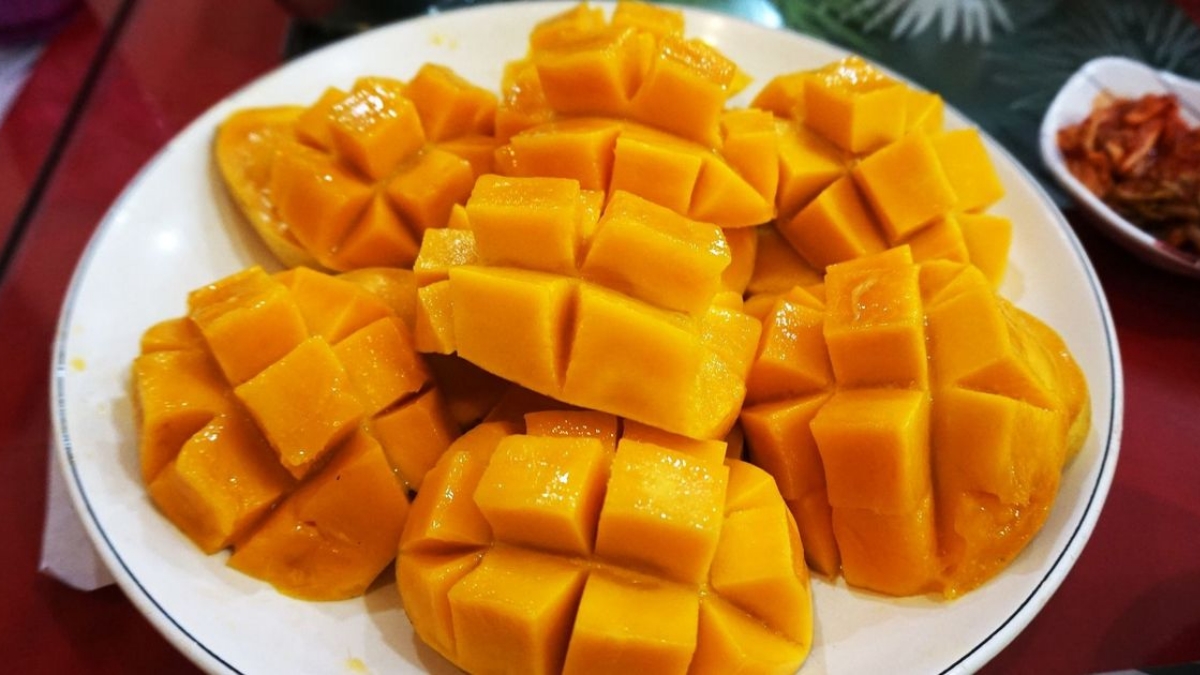Mango season in Goa is serious business. From the beginning of the year, denizens of India’s smallest state start anxiously scanning prized trees, especially those belonging to their neighbors. By March, tell-tale blossoms broadly indicate what’s on the way, and the wait begins in earnest. Anticipation sharpens with every degree the temperature rises, right into the height of summer.

Come April (which is the mango season) and both orchards and bazaars across the state spill over with grim-faced men and women, each intent on ascertaining the full picture of expected supply, sizes and prices. Families put their heads together to carefully calculate the right time to enter the market so that they are assured of their fair share of the most desirable fruit. By this time, the rest of India is giddy with rapture over the arrival of Hapoos from the coastlines of Maharashtra and Gujarat. But in Goa, the waiting game isn’t for that pale approximation of the original Alphonso, which is left for tourists and similar ignorants.
There are as many as over 100 varieties of mangoes that are grown in Goa. It is called “King of fruits” for a reason. The most famous and widely available types of mangoes are the following:
- Mankurad
Other names this juicy fruit is known as is Goa Mankur, Kurad, Malcorado, Corado, and more. Mankurad mango is widely available in the state. While the Portuguese called it Malcorado (which meant poor-coloured), these are smaller in size. But hey, they are juicy, tasty, and oh-so-delicious!

- Afons
Also called Goa Appus, Goa Alfonso, these Goan Alonsos are fibreless, juicy, tasty, pulpy and big in size. It is commonly available in the whole state. Its taste is unforgettably sweet! Portugese duke Afonso de Albuquerque brought this to Goa and now we cannot imagine mangoes without this variety.
- Malgesh
Also known as Malgesta, Malgessa, Malgueso, Malgess, this is found more in North Goa. In Portuguese, the name literally means hard or difficult to digest. Malgesh is further available in two varieties of Khand Malgesh (thick-skinned, inferior quality) and Akno Malgesh (superior quality).
- Bishop
Bishop mangoes are also known as Bispo and are limitedly cultivated in North Goa. It is of mediocre quality as compared to other varieties. Lore has it that it was named after being inspired by the large belly of a bishop.
- Culas
Okay, this is different in terms of tastes, and also in appearance. This type of mango is a little tangy and not very sweet. There are many sub-varieties of this available.
- Hilario
Hilario is also known as Mangilar, Mangilal, Mang Hilario, etc, and is as popular as Mankurad in Goa. Mostly, North Goa. Its name stems from the tale that there was a tree in the garden of Hilario Fernandes of Siolim in Bardez taluka. It is a late variety and comes to the market quite late.
- Mussarat
Popularly cultivated in North Goa, Mussarat or Monserrate de Bardez is named after the Bardez taluka where it originated. The immature fruits of this variety exhibit an intense red colour. This variety is mostly used in the preparation of jams, sweet pickles and processed products.

- Fernandin
The Fernandin mango also known as Fernandina is used exclusively as a table fruit and is very popular as it does not get spoiled by rain nor by fruit flies.
- Xavier
Used exclusively as a table fruit, the xavier mango is very popular, juicy and a sweet variety. It is planted throughout the state and is marketed both in North and South Goa. Both fibrous and non-fibrous forms exist.
Now, that you know what are the types, you surely wanna get your hands on some of the juiciest, freshest fruits during mango season, right? Well, you can head to local markets, supermarkets, etc to buy it. But still, we are listing some places where you will get the best lot!


